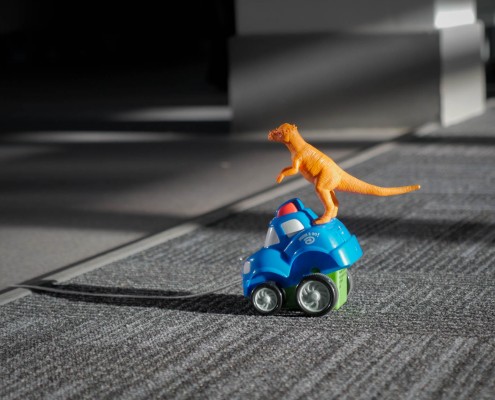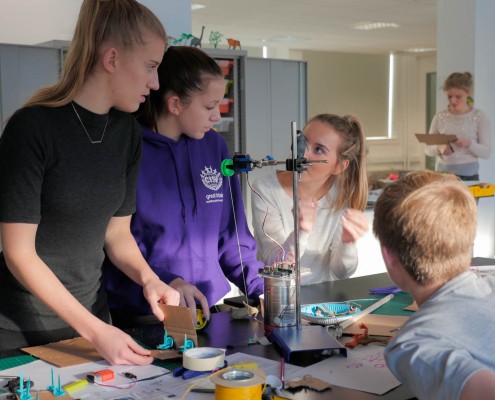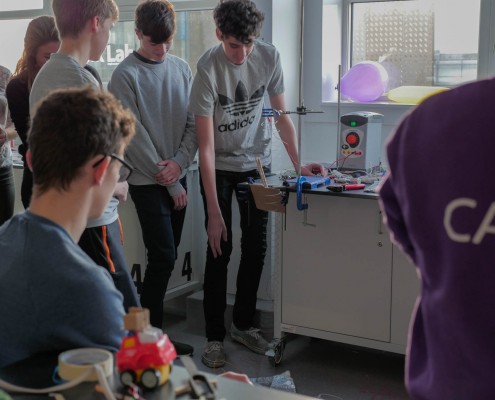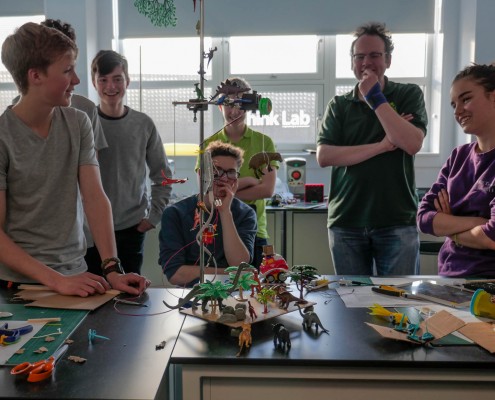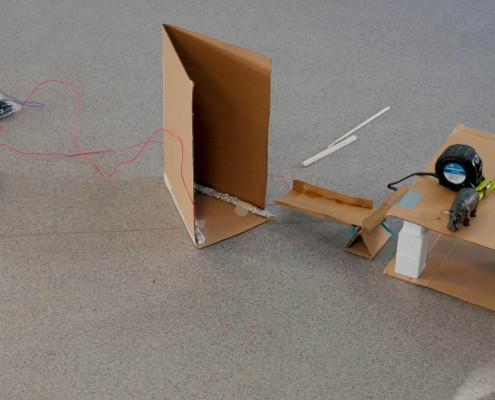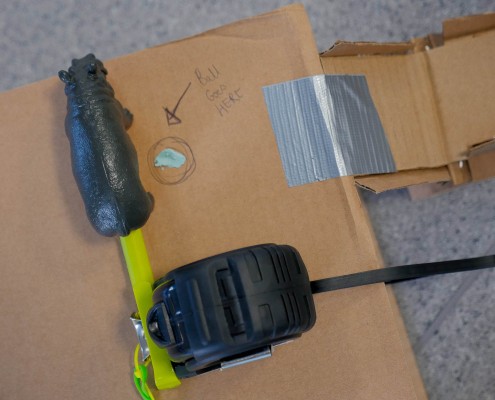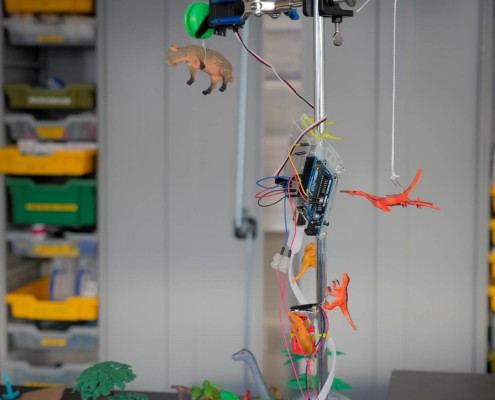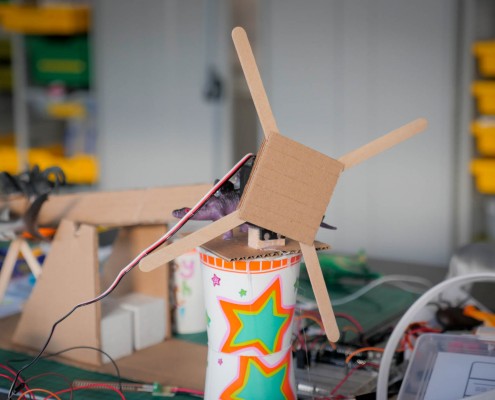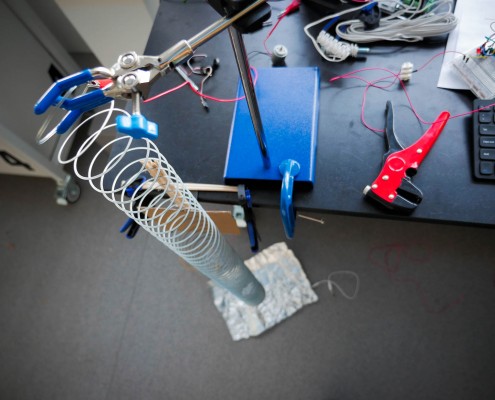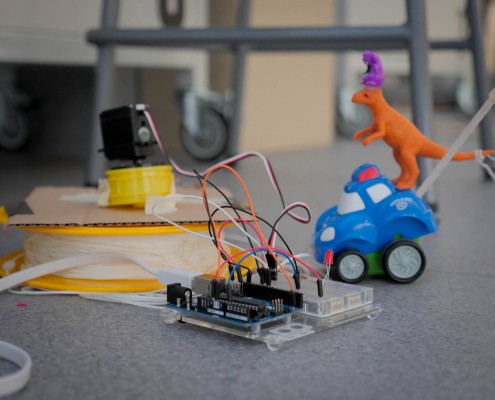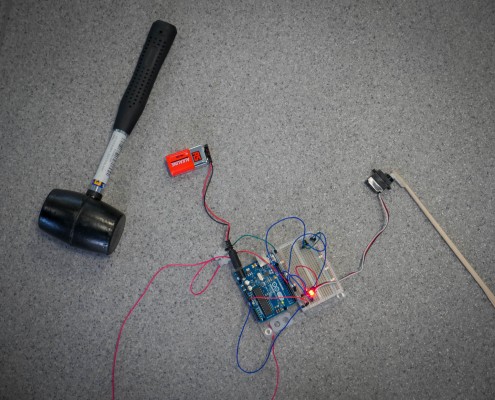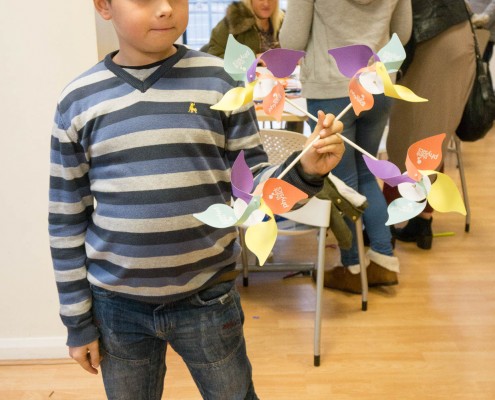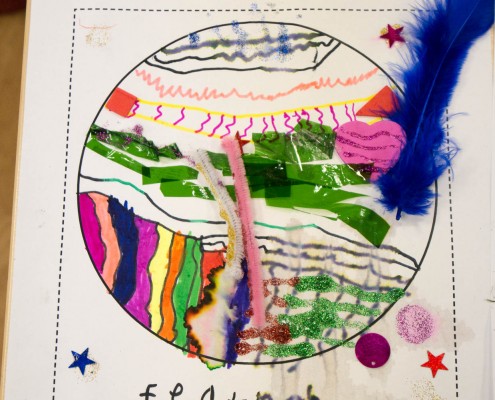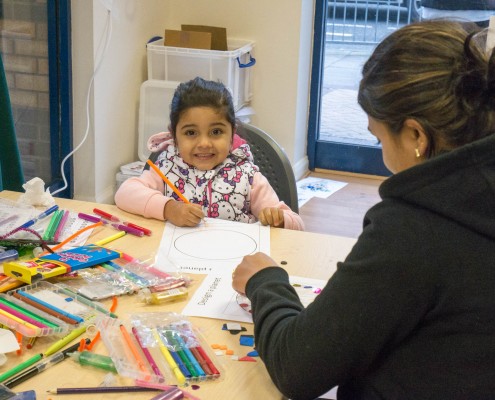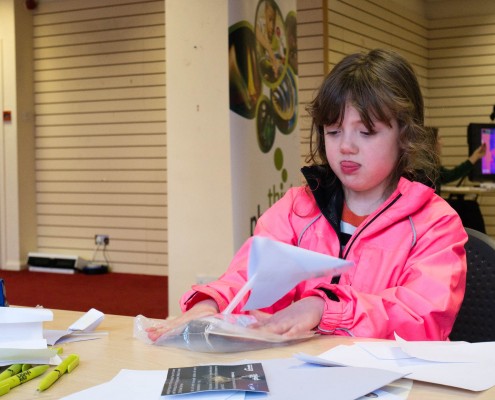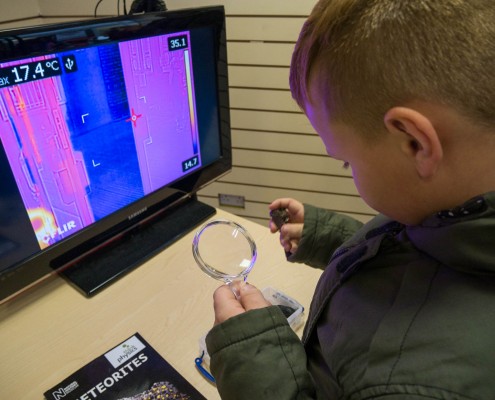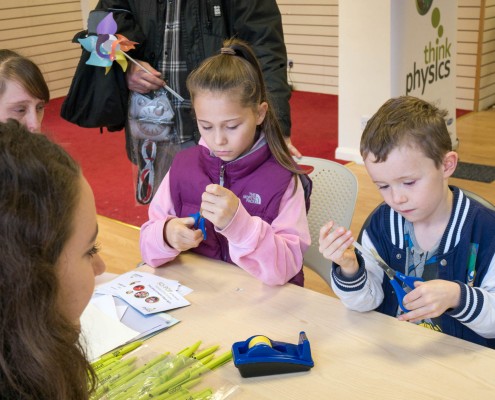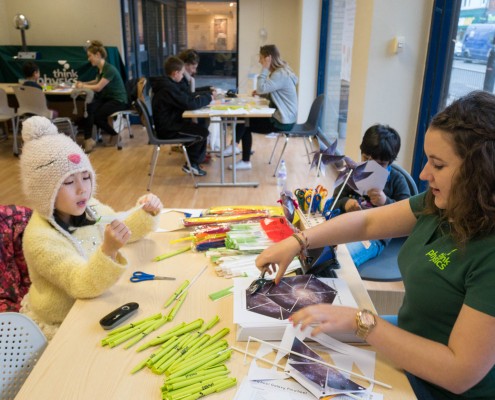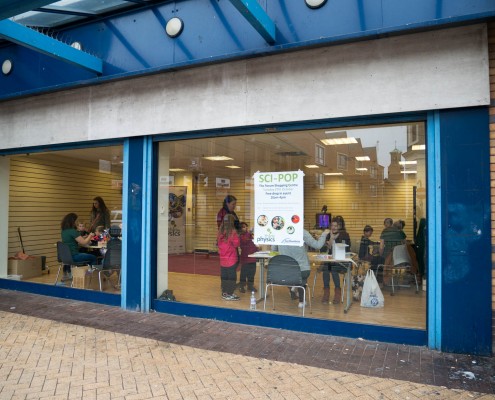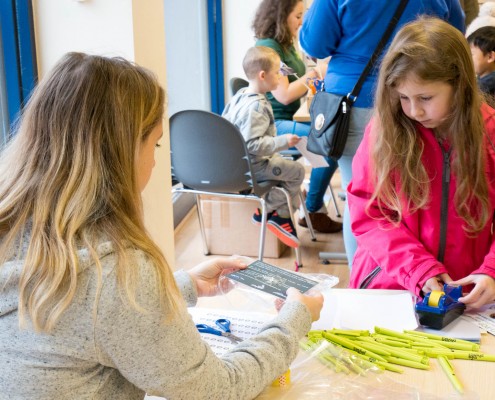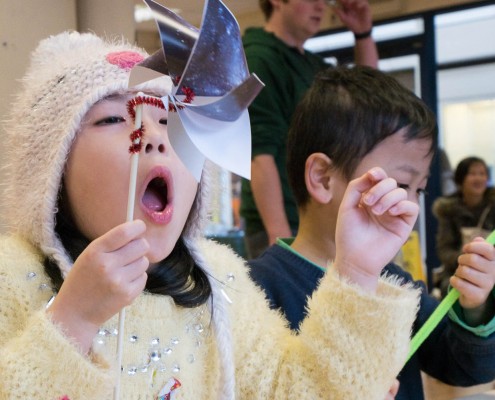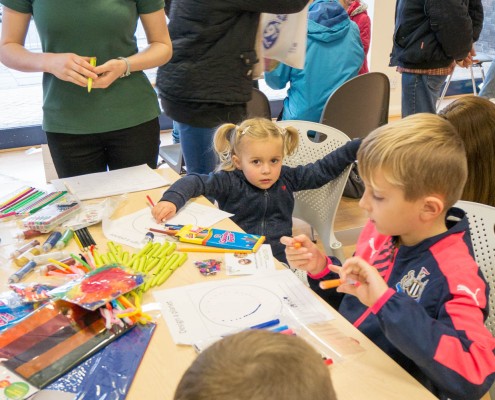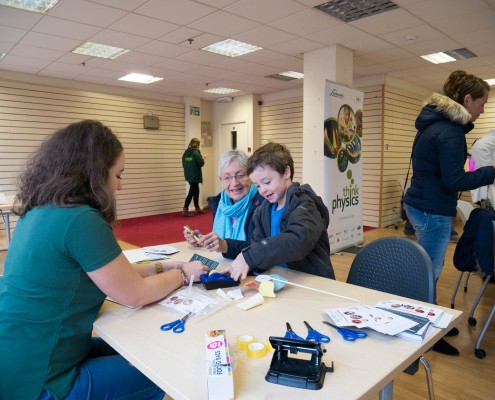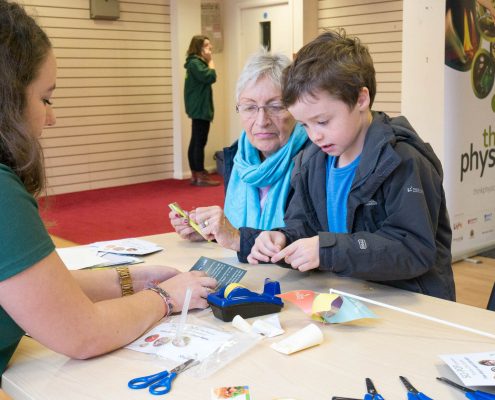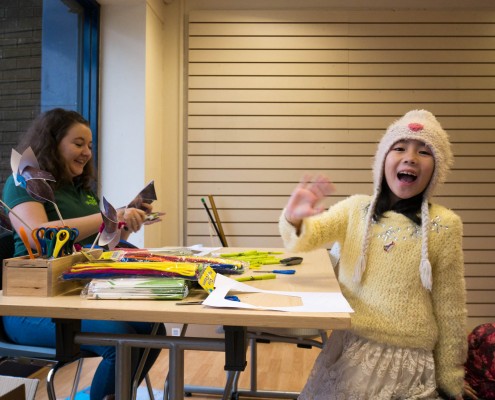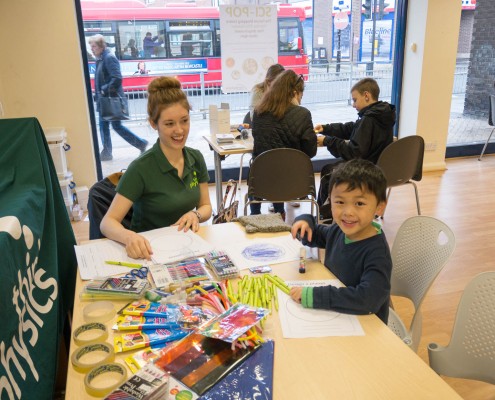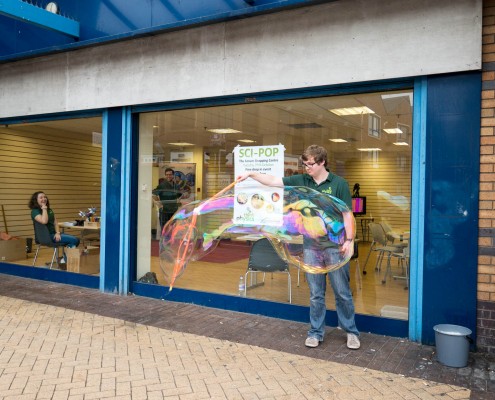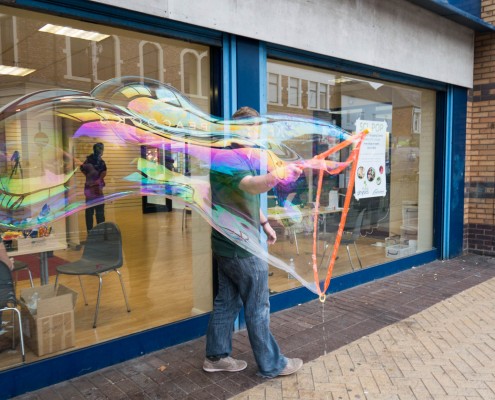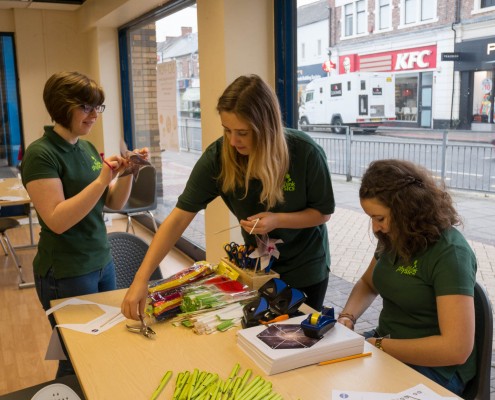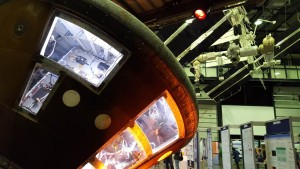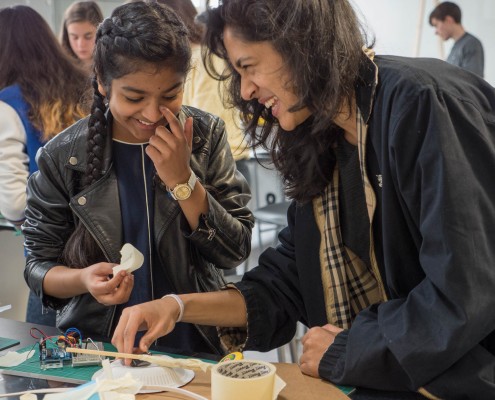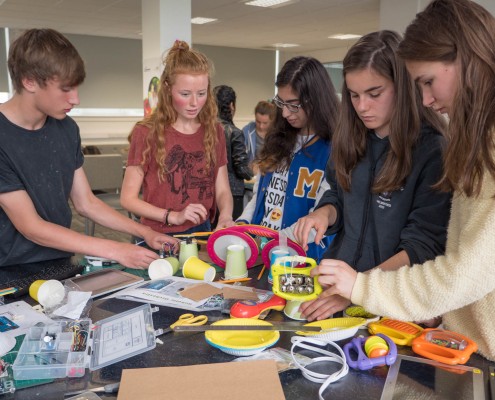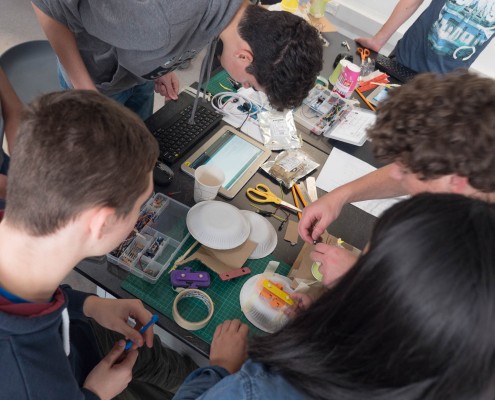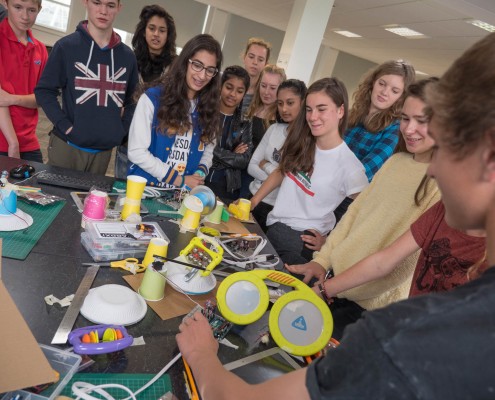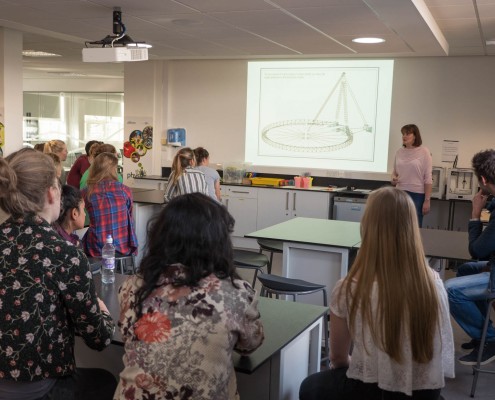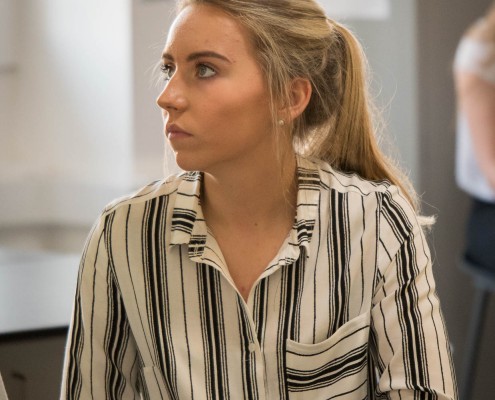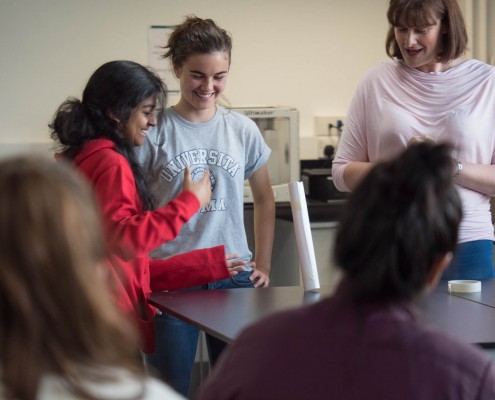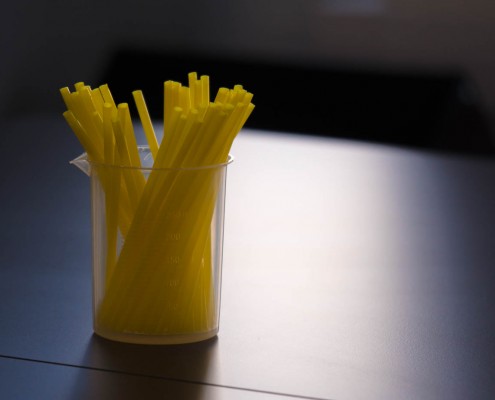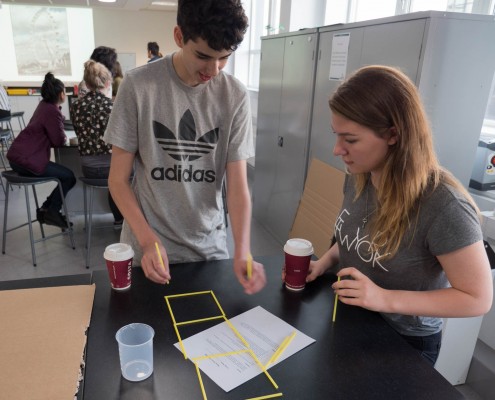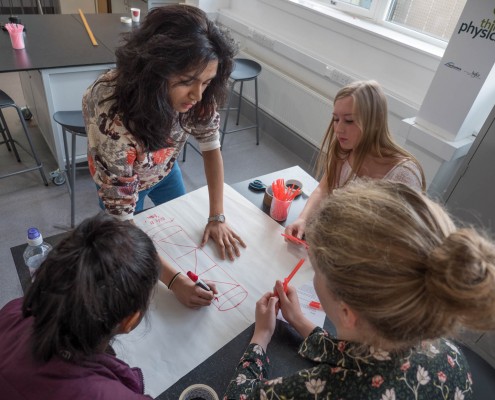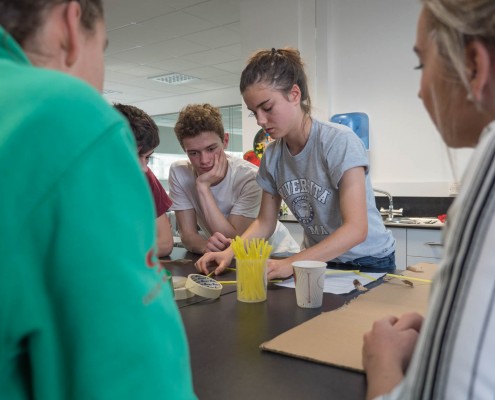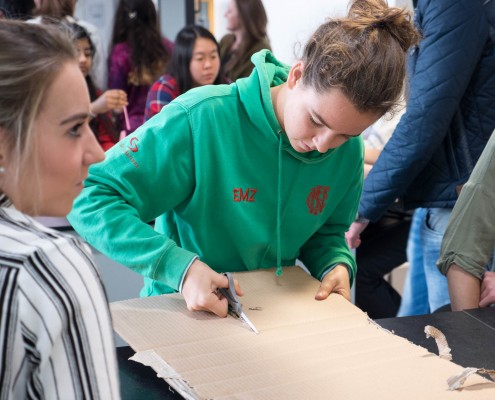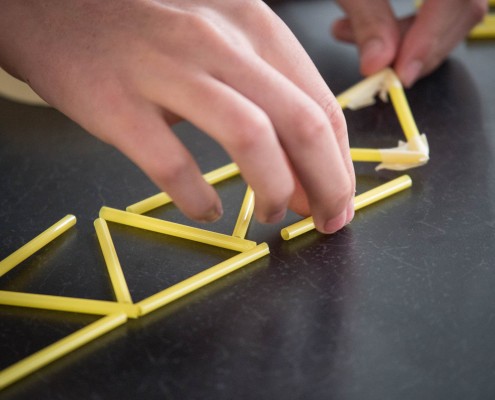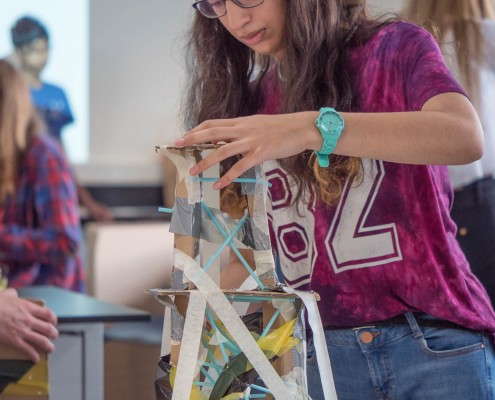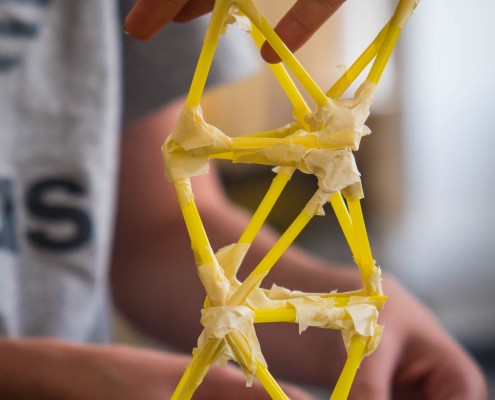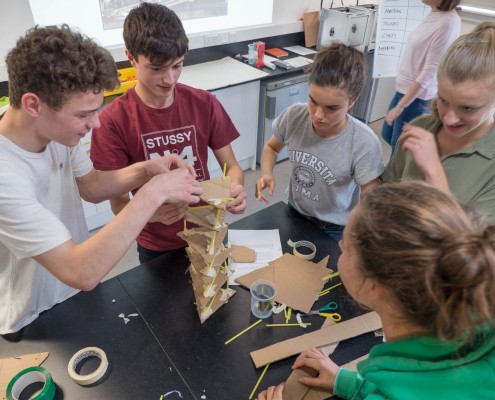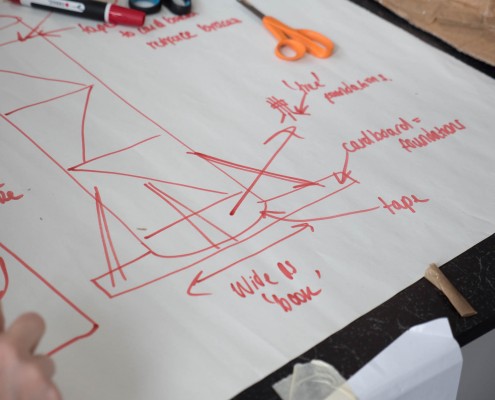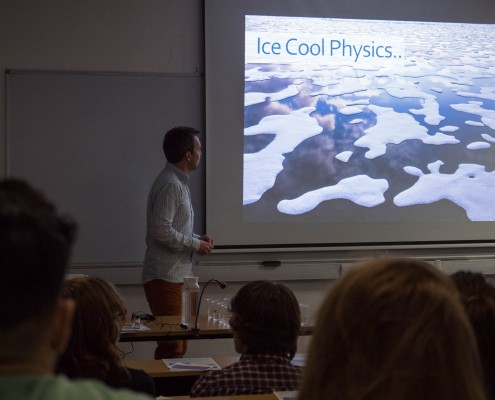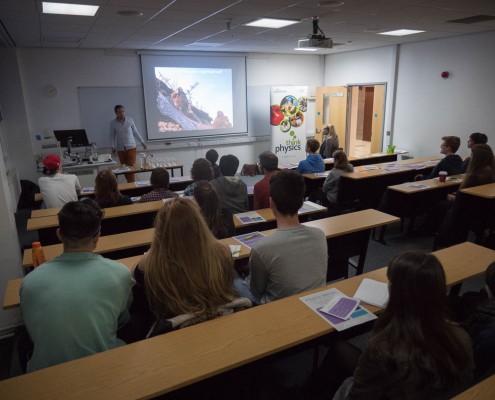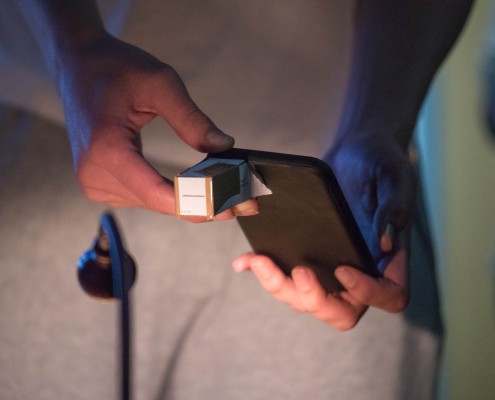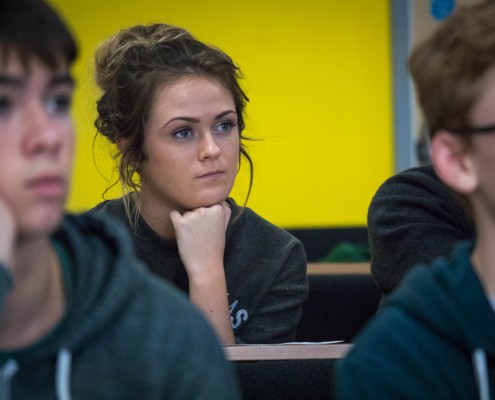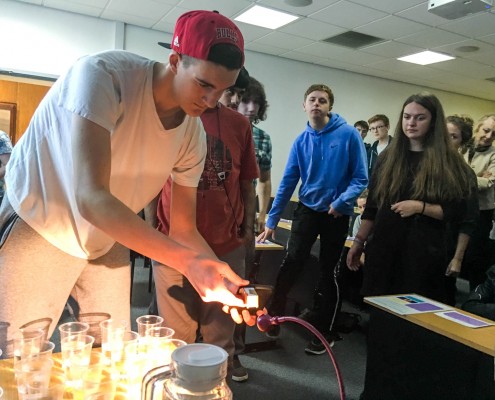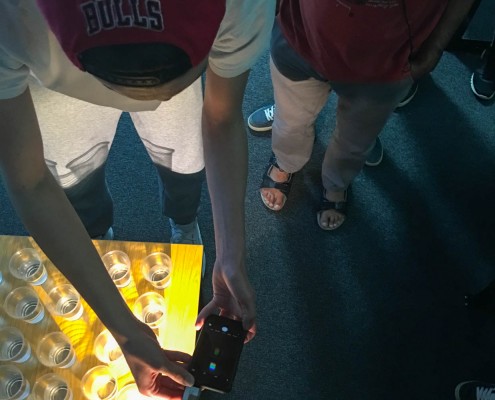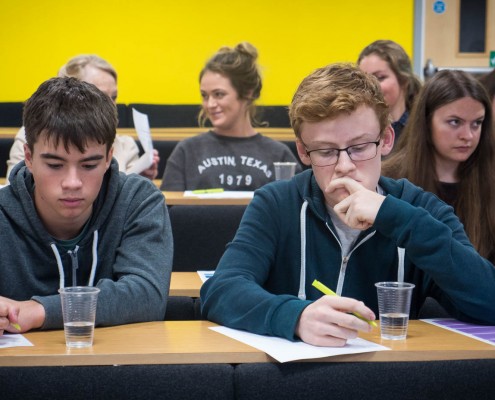RI Engineering Masterclass: Chain Reaction
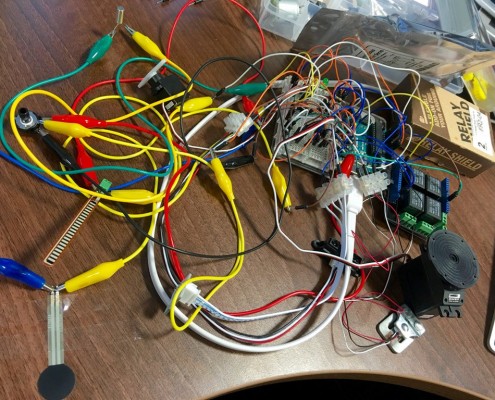
My desk, earlier this week.
All is now revealed: I was prepping for a new workshop, delivered for the first time this morning to the poor unsuspecting members of our Autumn 2015 cohort for the Royal Institution Engineering Masterclass scheme. This was their sixth and last session, and we wanted to leave them with something creative, challenging, and just a little ridiculous.
There are lots of ‘chain reaction’ type workshops around, and while they’re a heap of fun they tend to go big on the trial-and-error aspect of engineering. I wanted something just a little more thoughtful that brought in a wider range of elements. So the plan was hatched for each stage of the machine to weave in and out between the physical domain and the electronic.
That is: the connections between stages of the chain reaction wouldn’t all be mechanical. So we had a wide range of sensors, some Arduino code to handle those inputs, and a few different types of servos, relays and motors to transfer the electronic processing back into the mechanical realm.
It was a lot of try to pack into a 2½ hour workshop, but it almost worked. It helps that this bunch of Masterclass students are smart, capable and inventive, and they worked really hard to make something out of the session. We didn’t get a sustained chain of machines going, but here’s what they did, and what it all looked like:
Well done, everyone. I thoroughly enjoyed working with you, and you should be properly proud of your inventiveness and ingenuity.
Some of you were asking about the Arduino kits we use: I recommend Oomlout’s ARDX kits. There are other starter kits out there, often with glossier booklets to accompany them, but I’ve found Oomlout’s documentation to be better-written than most, and the range of components is good. They’re also one of the cheaper starter kits. You can buy directly from Oomlout (which is a lovely chap called Aaron who’s usually around at Maker Faire UK) or via Amazon. Other useful suppliers include Pimoroni and Kitronik.
The Arduino ecosystem is vast but fairly accessible, and the suppliers above have a huge range of breakout boards, add-on ‘shields’, sensor inputs, servos, and so on. The hardest part is starting to think of projects to apply all your new tools to – which is precisely why I like things like chain reaction machines or playing musical instruments. There are lots of books of projects like plant waterers or burglar alarms, but straight-up playing with this stuff gives you an excellent idea of the range of problems to which you might apply it all. In the end, I think guilt-free playing is the most effective route to learning about electronics and micro controllers, at least for these initial steps. Later on… well hey, people do degrees and apprenticeships and make careers in this stuff. But start with something you find amusing.
I’ll be making quite a few changes to the Chain Reaction workshop before I run it again. But I will run it again. Thanks again all!
Update Monday 23rd – the lovely folks at Cambridge Science Centre have this morning tweeted a link to this video. Wow.

